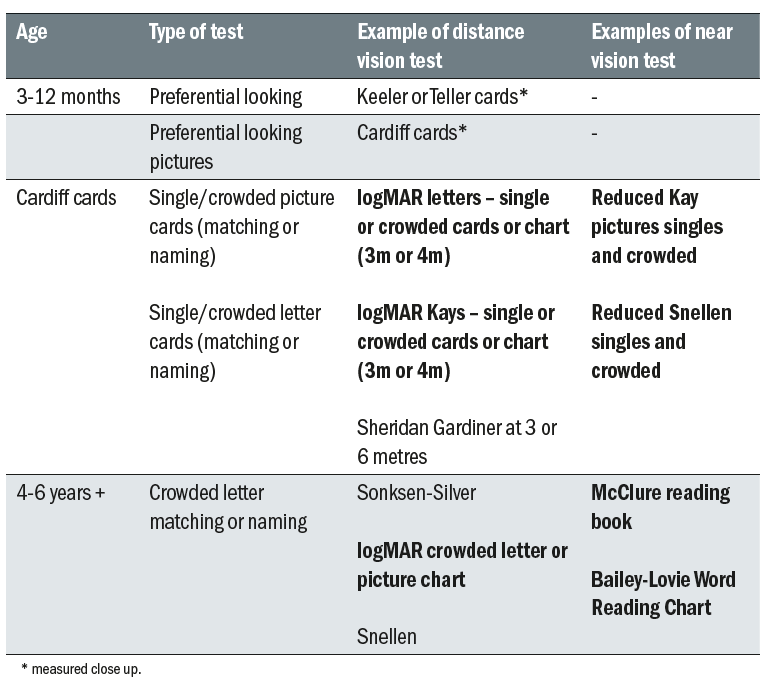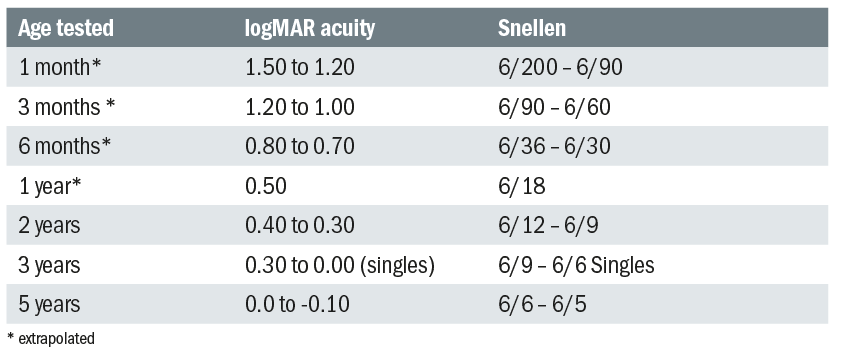In the last of our recent series of articles on paediatric eye care, Lynne Speedwell discussed the eye examination of the younger patient (Optician 25.01.2019). This article serves as one of the source references for this month’s interactive exercise. Firstly, here is a brief reminder of some of the key points raised in the article.
Communication
- Children need to be reviewed more frequently than adults so there is the chance to build up a good rapport with them and their families and to watch how our input into their visual development adds to their capability and self-assurance.
- In order to help children feel more familiar with what happens when they attend for their appointment, have a children’s section on your practice website. It can contain eye-related facts, colouring games or downloadable sheets. Include some videos or links to information videos on other sites such as ABDO’s Professor Hallux’s i-guide http://www.funkidslive.com/learn/hallux/i-guide or the College of Optometrists’ infographic of a child having a sight test, or the eye movie on the website https://kidshealth.org.
- In the consulting room, try to put both child and parent at ease.
- Try to make the questions and discussion age specific and look at both child and parent as you speak. Start by asking their age, even though you probably already know it. This is an easy question that they will know the answer to.
- Be aware of your terminology and what it might mean to the child. If you use a word that you think they might not understand, ask if they know its meaning.
- Children will not usually complain that they cannot see, they just assume everyone sees the same as they do.
- Occasionally children will fabricate symptoms.
- Let them eat or drink while you are testing if it helps keep them still.
- Learn a lot of silly jokes – What do cows do in their spare time?
- For little ones, get to know some popular children’s characters so that you can bring them into the conversation and be prepared to sing nursery rhymes – ‘The Wheels on the Bus’ usually goes down well.
- If necessary, bring the child back on another day to complete the eye examination.
- When the child does behave well, praise and thank them even if they were naughty for most of the consultation. They will usually respond to encouragement and will try to do even better.
Assessment
The accuracy of assessing the vision is very much dependent upon the careful choice of the appropriate testing chart (see table 1).

Table 1: Age-specific acuity tests – tests in bold are the preferred option
It is also useful to know what the expected levels of vision might be for the younger patient (table 2).

Table 2: Expected vision for different ages
Cooperation within the consulting room is essential. Here are a few useful points to consider:
- Explain what you are doing as you go along and what the equipment is.
- Always say when you are turning the lights off or on. Do not stick to a strict routine so if the child wants to play with the trial lenses, start with retinoscopy and leave history and symptoms till later.
- Let the child ‘help’ by perhaps holding up a trial lens or attempting to hold down an eyelid.
- When examining patients on the slit lamp, tell them if you need to touch their lids, and warn them if your hands are cold.
- Be flexible in your approach: if a child will only calm down when sitting on the floor, then carry out some of the sight test there.
Interactive Exercise
An interactive exercise is available online related to the examination of a young child. A brief case scenario for your discussion has been designed to focus on what to tell the mother of a young, very active child regarding having an eye check. The two main points of focus are:
- Ways of coping with a poorly cooperative young child.
- Reassuring the mother over any concerns or fears she may have about the eye check for their young one.
This exercise is designed to encourage discussion by both optometrists and dispensing opticians as either group might be expected to deal with the challenges represented by these two areas of interest.
Before you attempt the exercise, there are six multiple choice questions which assess an overall understanding of paediatric assessment. To ensure successful completion, the relevant source materials are available here and here.
